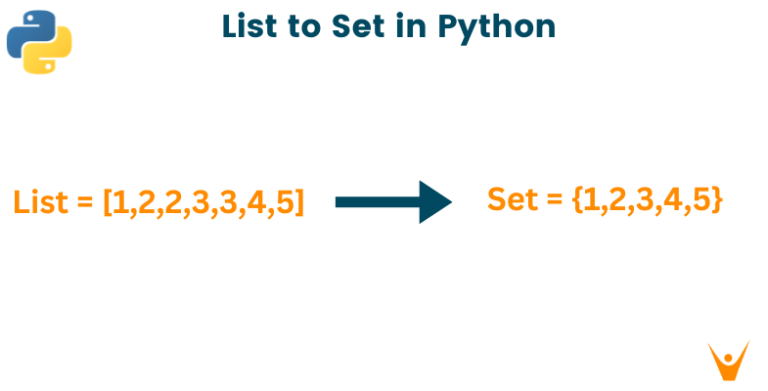The Ultimate Guide to Ecommerce CRO Audit: Boost Conversions & Sales
In the fiercely competitive world of ecommerce, every click counts. Turning website visitors into paying customers is the lifeblood of your online store. But how do you ensure your website is optimized to drive conversions and maximize sales? That’s where an ecommerce CRO audit comes in.
What is Ecommerce CRO Audit?
An ecommerce CRO audit, or Conversion Rate Optimization audit, is a comprehensive analysis of your online store designed to pinpoint areas that hinder visitors from becoming paying customers. It’s essentially a diagnostic tool to uncover what’s causing website visitors to abandon ship before checkout, and identify opportunities to turn them into loyal customers.
Here’s how a CRO audit helps you improve your ecommerce website:
User Experience (UX) Audit:
Your website should be an intuitive and frustration-free zone for visitors. A CRO audit evaluates elements like navigation, product page clarity, and checkout flow. Are visitors able to find the products they’re interested in quickly? Can they add items to their cart and complete the purchase process seamlessly? A well-designed user experience is crucial for keeping visitors engaged and moving them down the sales funnel.
Content Quality Assessment:
Compelling product descriptions and informative website content are essential for conversions. A CRO audit analyzes the quality of your content, ensuring it’s clear, concise, and speaks directly to your target audience’s needs. Does your product information answer common questions and highlight key features and benefits? Are your CTAs (calls to action) strong and strategically placed to encourage visitors to take the next step?
Technical Optimization Analysis:
In today’s fast-paced world, website speed is paramount. A CRO audit assesses your website’s loading times and mobile responsiveness. Remember, a website that takes forever to load or isn’t optimized for mobile devices will frustrate visitors and lead to lost sales. The audit also examines technical aspects that can impact conversions, such as secure payment gateways and a smooth checkout process.
Trust and Confidence Building Evaluation:
Online shoppers are understandably cautious about sharing their personal information and making purchases online. A CRO audit examines the elements that build trust and user confidence, such as security badges, customer reviews, and clear return policies. By incorporating these trust signals, you can alleviate customer concerns and encourage them to convert.
By dissecting these various aspects of your online store, a CRO audit equips you with valuable insights to optimize the customer journey and remove roadblocks that prevent conversions. This data-driven approach allows you to make informed decisions about website improvements, ultimately leading to a significant boost in sales and revenue for your ecommerce business.
Conducting an Ecommerce CRO Audit: A Step-by-Step Guide
Are you prepared to transform your digital shop into a conversion dynamo? Here’s a detailed breakdown of how to conduct a comprehensive ecommerce CRO audit:
1. Define Your Conversion Goals:
It all starts with knowing what success looks like. Are you aiming to increase purchases, add more newsletter subscribers, or get visitors to add items to their carts? Prioritizing these goals will be the compass guiding your audit and optimization efforts.
2. Analyze Your Traffic Sources:
Understanding where your website visitors come from is crucial. Are they arriving from organic search results, social media campaigns, or paid advertising? Knowing your traffic sources allows you to tailor your CRO strategy for different visitor segments.
3. Evaluate User Experience (UX):
Imagine your website as a welcoming store, not a confusing labyrinth. A smooth UX is paramount. Evaluate key elements like navigation, product page clarity, and checkout flow. Can visitors find the products they’re looking for quickly and complete purchases effortlessly?
4. Assess Content Quality and Relevance:
Compelling product descriptions and informative website content are conversion champions. Your CRO audit should assess the quality of your content, ensuring it’s clear, concise, and speaks directly to your target audience’s needs. Does your product information answer common questions and highlight key features? Are your CTAs (calls to action) strong and strategically placed to encourage visitors to take the next step?
5. Analyze Call to Actions (CTAs):
Clear and effective CTAs are like neon signs, telling visitors exactly what action you want them to take – “Add to Cart,” “Subscribe Now,” etc. Make sure your CTAs stand out, use strong action verbs, and are strategically placed throughout your website.
6. Ensure Mobile Responsiveness and Speed:
Mobile browsing reigns supreme in today’s ecommerce landscape. A website that’s not optimized for mobile devices is like a store with closed doors on mobile browsing hours – frustrating visitors and leading to lost conversions. Additionally, slow loading times can significantly hurt your conversion rate. A CRO audit should assess both mobile responsiveness and website speed.
7. Build Trust and User Confidence:
Online shoppers are understandably cautious about sharing personal information and making purchases online. A CRO audit should evaluate elements that build trust and user confidence, such as security badges, customer reviews, and clear return policies. By incorporating these trust signals, you can alleviate customer concerns and encourage them to convert.
8. Gather User Feedback:
Invaluable insights often come directly from your customers. Utilize surveys, user testing tools, and heatmaps to understand user behavior and identify pain points. This user feedback allows you to see your website through your customers’ eyes and address any issues hindering conversions.
By following these steps, you’ll be well-equipped to conduct a comprehensive ecommerce CRO audit. Remember, a CRO audit is an ongoing process. Regularly analyzing your website and implementing data-driven improvements will keep your online store optimized for maximum conversions and sustainable growth.
Implementing Your Ecommerce CRO Audit
You’ve conducted your ecommerce CRO audit and identified areas for improvement. Now it’s time to translate those insights into real action! Here’s how:
1. Prioritize CRO Opportunities:
Not all improvements are created equal. Focus on high-impact areas that can yield significant results quickly. These are your “quick wins” – think simplifying the checkout process or improving product image quality. However, don’t neglect long-term optimization strategies. Consider conducting a cost-benefit analysis to prioritize opportunities based on their potential impact and resource requirements.
2. Develop Data-Driven Hypotheses:
Don’t rely on guesswork! Base your optimization efforts on well-defined hypotheses informed by the data you’ve gathered during your CRO audit. For instance, you could propose that altering the hue of your “Add to Cart” button, shifting it from blue to orange, may result in an increased click-through rate. Clearly define the specific change you’ll be testing and the expected outcome.
3. Embrace the Power of A/B Testing:
A/B testing is your secret weapon in CRO. It allows you to compare two different versions of a website element (like a product page layout or a CTA) and see which one performs better in terms of conversions. By continuously testing and measuring results, you can iterate and refine your website based on real data, leading to a data-driven optimization process.
Here are some additional tips for implementing your CRO audit:
- Set SMART Goals:
Make your goals Specific, Measurable, Achievable, Relevant, and Time-bound. This ensures your optimization efforts are focused and trackable. - Create a CRO Roadmap:
Develop a plan outlining the specific changes you’ll make, the timeline for implementation, and how you’ll measure success. - Communicate and Collaborate:
Share your CRO findings and plans with relevant stakeholders within your organization. Collaboration is key to successful implementation. - Track and Analyze Results:
Continuously monitor the impact of your CRO efforts. Use website analytics tools to track key metrics like conversion rates and identify areas for further improvement.
By following these steps, you can transform your ecommerce CRO audit from a diagnostic tool into a powerful action plan for optimizing your online store and driving sustainable growth. Remember, CRO is an ongoing process. Regularly revisit your audit, implement data-driven improvements, and watch your conversion rates soar!
Conclusion
By conducting regular ecommerce CRO audits, you can transform your website into a conversion machine. Remember, even small improvements in conversion rate can lead to significant growth in sales and revenue. Take control of your online store’s performance and start reaping the benefits of a well-optimized ecommerce experience today!
Take the next step towards ecommerce success with OnextDigital! We offer a comprehensive suite of services designed to help you optimize your online store, including: Web Development Service, Mobile App Development, UX/UI Design Service, White label software service, and CRM & auto marketing implement service. With OnextDigital’s expertise in CRO, web development, and UX/UI design, you can create an ecommerce website that converts visitors into loyal customers. Contact us today for a free consultation and see how we can help you achieve your ecommerce goals!







